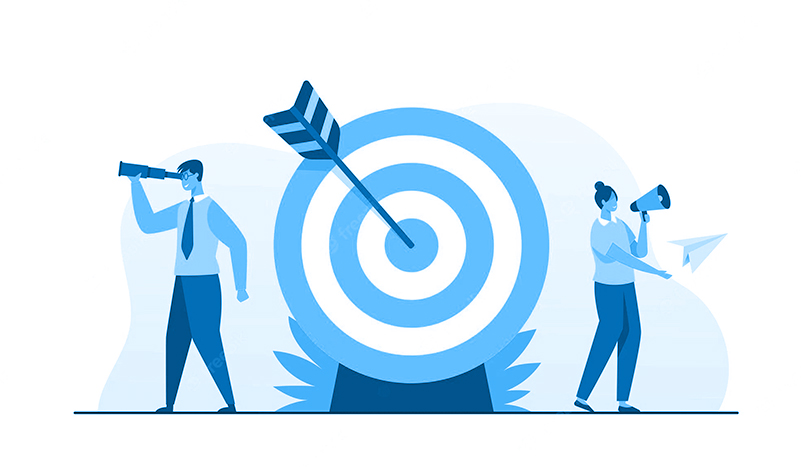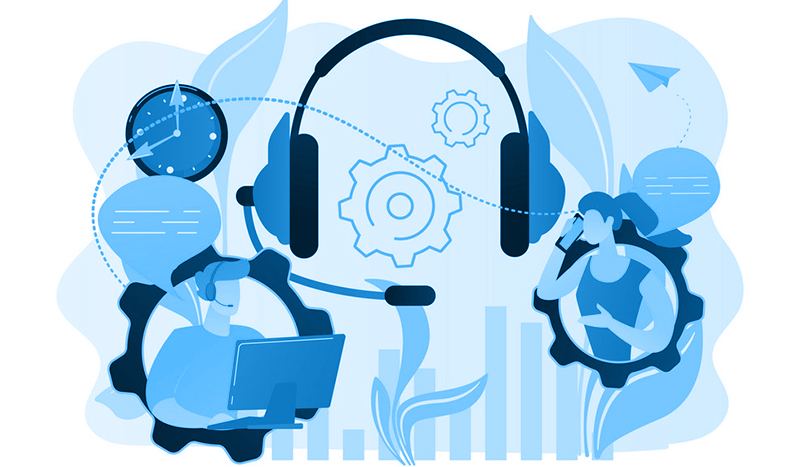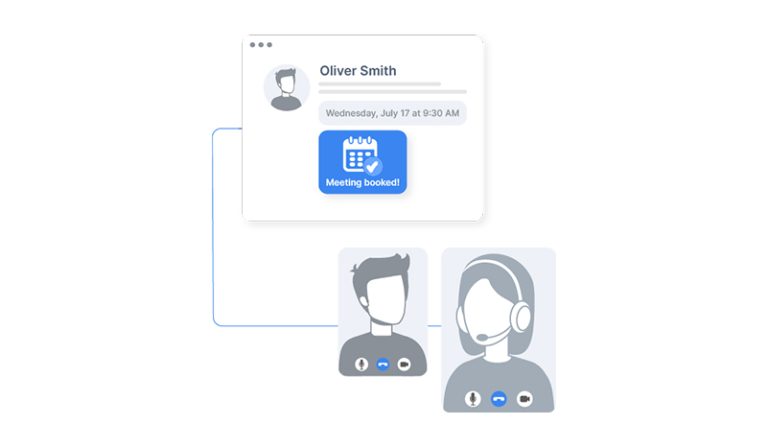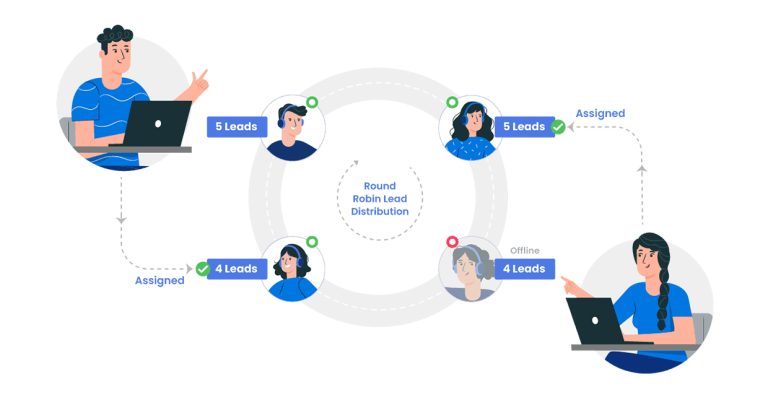As a sales development representative (SDR), it is crucial to optimize your outbound lead generation efforts in order to achieve success in your role. By constantly evaluating and improving your outbound lead generation efforts, you can increase the number of qualified leads and ultimately drive more revenue for your company.
However, to make this improvement happen, you need to follow a tried-and-tested SDR strategy. Better yet, you should have a few under your sleeve if you want better chances of securing and converting new SDR leads.
Check out our top 5 SDR Lead Generation Strategies in 2023:
2.Ensure that marketing and sales are working in harmony with SDRs
3.Implement automation for repetitive tasks
Here are the Top 5 SDR Lead Generation Strategies in 2023 :
Let’s take a look at the essential strategies you should consider. Keep in mind that you can combine these and create a more comprehensive SDR lead generation strategy for your business needs.
1. Set a clear objective
Prior to setting your objective for SDR lead generation, it is important to have a team meeting with your sales team to clarify the desired outcome of the process. This will help to ensure that everyone on the team is on the same page and working towards a common goal.
Having a clear and attainable objective that is well-defined and understood by the team will make the lead generation process more efficient and effective.
During the meeting, it is important to discuss the goal of the SDR lead generation process and how it aligns with the company’s larger sales targets. The objective should be specific and measurable, so that progress can be tracked and evaluated over time.
With QikChat’s meetings tracker, you will be able to see the amount of meetings each SDR has had with that specific prospect, providing unparalleled insight to your sales efficiency.

2. Ensure that marketing and sales are working in harmony with SDRs
For SDRs to be successful in spotting and delivering qualified leads, it is essential for the marketing and sales teams to collaborate closely with them. This requires regular meetings between these teams to facilitate the circulation of information and improve the planning of SDR strategy efforts.
These meetings can be highly beneficial as they allow the teams to share their insights on the leads, the sales efficiency of the sales process and to develop coordinated efforts to engage with potential customers. The alignment of the marketing team and SDRs efforts can help to ensure that leads are being approached in the most effective way, increasing the chances of conversion.
Effective engagement by SDRs with potential SDR leads also makes the job of the sales teams much easier as they will be dealing with leads that are more qualified.
All in all, aligning the marketing and SDR efforts is crucial to successfully identifying and delivering leads that set up a successful sales process for both teams.
Here are three points on how to make sure marketing and sales are working in harmony with SDRs:
- Share customer insights and feedback between teams, so that marketing can tailor their messaging and sales can better understand customer needs. By sharing customer feedback, marketing can tailor their messaging to better align with customer needs and pain points.
- Work together closely on lead generation and qualification processes. This way both teams will be able to identify and nurture the right leads. For example, marketing may identify potential leads through various channels such as social media, content marketing, or search engine optimization, and then pass those leads to the sales team for further qualification and follow-up.
- Regularly review your processes to ensure that they are working well and to identify areas for improvement. By regularly reviewing and adjusting your processes, you can ensure that marketing and sales are working in harmony with SDRs and that you are maximizing the effectiveness of marketing spend.

3. Implement automation for repetitive tasks
The implementation of automation can greatly benefit sales development representatives by increasing their efficiency and allowing them to focus on more important sales development activities.
Automation can streamline administrative tasks, research, and other repetitive and time-consuming processes, which can otherwise take a significant portion of an SDR’s time.
By automating these tasks, SDRs can free up time to focus on more strategic SDR lead generation activities such as; outreach, scheduling meetings with leads and creating product or service presentations.
Automation can enhance the consistency of data collection and analysis (outbound SDR metrics included), which can enhance the quality of leads and the effectiveness of sales strategies.
Lastly, automation can also improve the scalability of the sales process, allowing SDRs to engage with a larger volume of leads with less effort.
Here are three tools you could use to implement automation for repetitive tasks:
- A scheduling automation app like QikChat will help you seamlessly schedule meetings with inbound leads as fast as possible. With its advance lead routing, schedule meetings with the right team members, setting up the deal for the most success possible.
- A great communication tool such as Fuze allows your employees to easily transition between chats, calls, and meetings. This is always great for your team’s productivity.
- An intuitive CRM such as Engagebay will give you every sales management functionality you need, at a price that won’t break the bank. This platform is a proper powerhouse where you’ll find a myriad of features you need for successful marketing and sales campaigns.
4. Collect the necessary info and do your homework
It is crucial for a sales development representative to be well-informed about their clients, industry trends, competing products, and other relevant business information in order to target the appropriate clients and successfully close valuable deals in a timely manner.
This knowledge allows salespeople to tailor their sales messaging to the specific needs and pain points of their target audience, and to position their solutions in the most compelling way.
Additionally, having a thorough understanding of the competitive landscape can help SDRs to identify unique selling points of their own solutions. This can also help to anticipate and handle objections from potential customers. This is a major prerequisite that you need to keep in mind before you start crafting your new SDR lead generation strategy.
Additionally, having a clear understanding of clients and their businesses can help build trust and credibility with potential customers, making it easier to establish and maintain long-term relationships.
SDR lead generation leverages innovative strategies and technologies, such as advanced invoice matching software, to streamline the process and drive efficient sales prospecting
In summary, detailed knowledge of clients, business trends and competing solutions is a key asset for salespeople, as it enables them to position the solution being sold with extreme relevancy that sets the sales representative up as a domain expert. What this does, is shorten sales cycles and ultimately drive growth for the company.

5. It’s time for cold calling
Cold calling is a significant aspect of the role of sales development representatives. As such, it is also an invaluable part of every SDR lead generation strategy.
SDRs are responsible for reaching out to potential customers, introducing their company and its products or services, and attempting to schedule meetings or demos.
To improve their cold-calling skills, SDRs should actively participate in team cold-calling sessions, where they can observe and learn from the different approaches and strategies used by other team members. This can help them to develop their own unique style and to refine their communication skills.
During these sessions, SDRs should also take an active listening role, paying attention to the different techniques used by their colleagues and taking notes on what works and what doesn’t. This will allow them to improve their own cold-calling strategies and to better tailor their approach to the specific needs of their target audience.
Additionally, SDRs should also be open to feedback and coaching from their managers to improve their cold calling performance. Addressing the issues during this phase is crucial since it directly impacts your SDR lead generation efforts.
Overall, cold calling is a key skill for SDRs and the participation in team SDR cold calling will enable them to become effective in their role and hit their target.
Here are three points on how to make the most of your cold-calling efforts:
- Make sure your sales representatives are always targeting the right audience. This is a prerequisite you need to take care of if you want to maximize your chances of success.
- Consider preparing a script that clearly communicates the value proposition of your product or service. Encourage your representatives to practice to make the entire process feel natural and smooth. After all, if a conversation fails to feel natural, your employees will have a difficult time closing a deal.
- Follow up effectively since that can help you build trust and increase the chances of conversion. Even when you close a deal, you shouldn’t allow your customer to feel abandoned. Follow up to reassure them that your business will be there for them even after they have made a payment.
Take Your SDR Lead Generation to the Next Level
SDR lead generation is an essential component of any sales and marketing strategy, and sales development representatives play a critical role in this process. The primary goal of SDR lead generation is to identify and qualify potential customers.
SDRs are responsible for reaching out to these prospects and nurturing them into becoming paying customers.
By utilizing the strategies mentioned above, like aligning with marketing and sales teams, automating tasks, and having a deep understanding of clients, your representatives can optimize their SDR lead generation efforts to increase the chances of turning leads into customers.
On top of that, SDRs should leverage the right tools and technologies to automate their lead-generation process. This can include marketing automation software, customer relationship management (CRM) systems, and sales intelligence tools. Which can help identify leads, track deal progress and performance (such as outbound SDR metrics), and improve the overall efficiency of the sales process.
Having the right SDR strategy, accompanied with the right tools, can enable SDR’s to generate high-quality leads, increase conversion rates, and ultimately drive revenue growth for the company.










